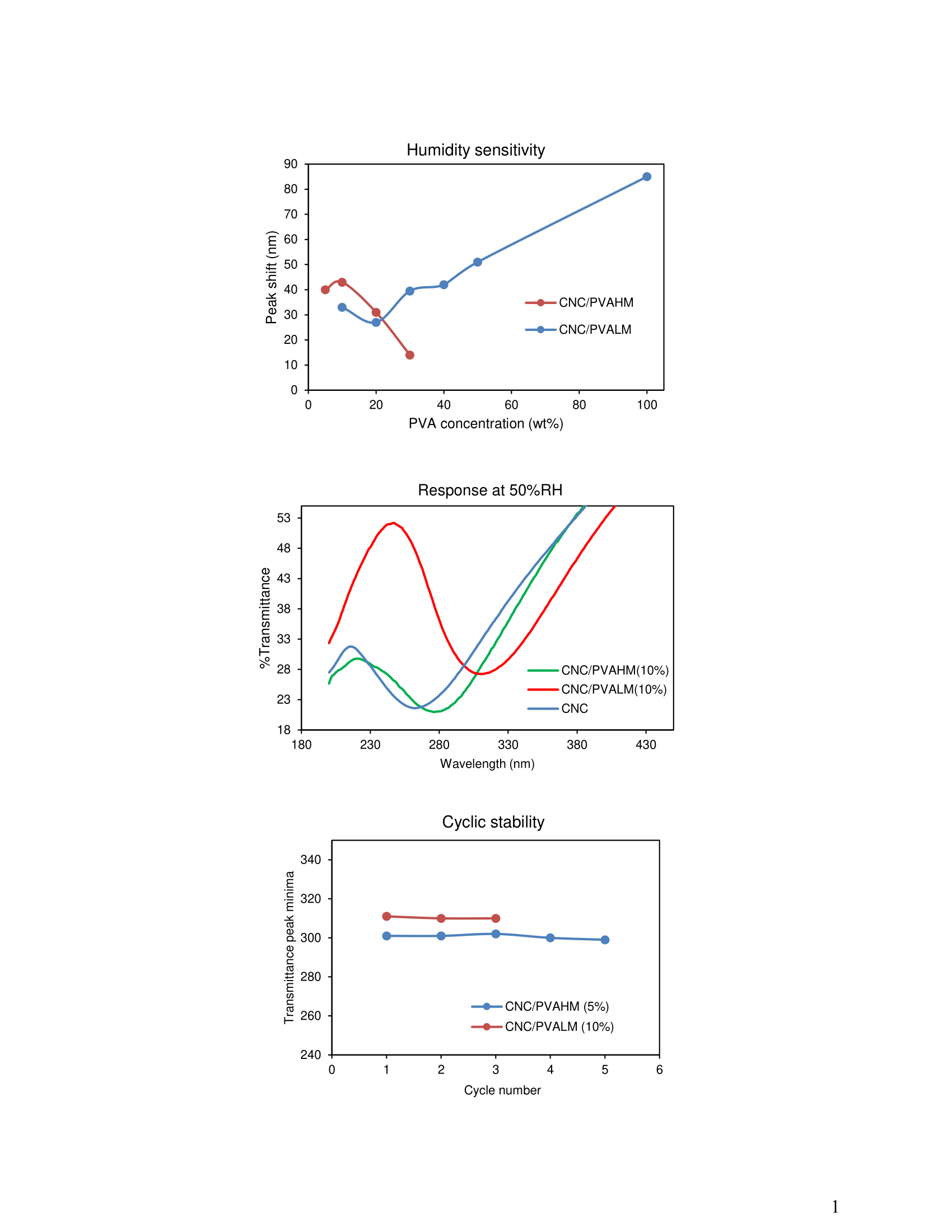(752a) Cellulose Nanocrystals/Polyvinyl Alcohol Nanocomposite Films for Humidity and Acid Vapor Sensing Applications
AIChE Annual Meeting
2020
2020 Virtual AIChE Annual Meeting
Forest and Plant Bioproducts Division
Chemical Modifications and Processing of Biomaterials
Friday, November 20, 2020 - 8:00am to 8:15am
Cellulose nanocrystals (CNC)/polyvinyl alcohol (PVA) nanocomposite films were prepared using a facile casting and heat treatment approach using PVALM (low molecular weight PVA, MW-1500) and PVAHM (high molecular weight PVA, MW-150000). We observed that the presence of physically crosslinked PVA improved the water resistant and flexibility of the composite films. The maximum reflectance wavelength increased with increasing in PVA concentration until the films became transparent due to elimination of chiral nematic self-assembly of CNC. The presence of PVA also improved the vapor sensing response of the composite film due to larger increase in pitch and reflectance wavelength peak shift compared to pure CNC film in the relative humidity (RH) range of 50% to 95%. Moreover, the humidity sensitivity of the films increased with increasing in PVALM concentration in the range 10 to 100%; however, sensitivity reduced for PVAHM in the concentration range of 5 to 30 wt.%. This may be due to restriction of CNC movement upon moisture absorption in presence physically crosslinked network of high molecular weight PVA chains. While low molecular weight PVA through its increased moisture absorption can enhance the CNC pitch without restricting its movement. Also, both the CNC/PVALM and CNC/PVAHM composite films exhibited excellent cyclic stability for their humidity response. Optimized PVA/CNC compositions will be used to obtain their humidity response in wider RH range. Morphological and mechanical characterization will be carried out for these composite films. Physically crosslinked PVA chains are expected to improve the dry and wet tensile strength compared to pure CNC films. Additionally, with optimal addition of NaOH to these composite films, the applicability of these films can be extended for acid vapor sensing applications. It is expected that the NaOH molecules dispersed between chiral nematic layers of CNC will generate water molecules when exposed to acid vapors. Water molecules generated during this neutralization are expected to induce corresponding increase in the pitch and shift in reflectance wavelength maxima. This study will provide facile and low-cost approach to design multi gas-sensitive devices with tunable response, cyclic stability and mechanical strength.


